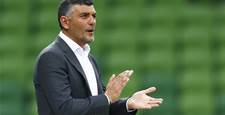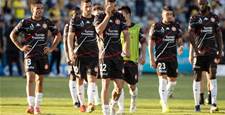GOLD Coast United seem be entering the A-League with two goals in mind.
One, without even a hint of modesty, is to sign the greatest team in the history of Australian domestic football and win the A-League in their first season. The other, which will take more than Clive Palmer’s billions, is to attract a sizeable fan-base to a club in a region that has never before seen professional football.If the first goal is achieved, one might presume that the second will naturally follow. Who wouldn’t want to go see an attack-minded team with a few Socceroos and international superstars win every game and bring national glory to Australia’s fastest growing regional centre?
But relying on on-field success alone is a mightily risky (one might even say completely untenable) way to establish a football club in the long-term. And as such, GC Utd need to make sure that regardless of who plays for, coaches or runs the club, fans are willing to embrace it and, more importantly, spend their hard earned dollars to attend matches even during the rough times.
Here is where Perth Glory have already set a perfect example for Palmer and co. Not, of course, the current rabble that claims to be a professional administration over west as present. For those whose memories extend to the years BC (before the Crawford Report) I’m reminding you of 1996 when a fast food entrepreneur gave the NSL a club that set a benchmark even today’s clubs can barely compete with.
As a young fan regularly in attendance at Perth Oval (as it was known back then) in those “Glory days” I was amazed at the inclusive nature of the club’s crowds. This inclusiveness seems to be lacking from most clubs today and unless GC United can capture it, they risk the same mediocre attendance figures (Melbourne Victory aside) currently achieved by the A-League.
One of the lessons Clive Palmer can learn from Glory’s foundation is the way the club ensured itself to be ethnically inclusive. The sizeable Asian community of the region has already been targeted, which is an excellent thing. Hopefully other groups will also be considered. The importance is not necessarily remaining ethnically ‘neutral’, but rather ‘inclusive’. This subtle difference in attitude might help not only GC United but certain other teams around the country also.
Similarly, the current HAL mantra seems to be to target the ‘family’ market. While this is an important demographic, it is also quite fickle. It won’t go out of its way to attend every game and it doesn’t add a whole lot to the match-day atmosphere. Attracting singing, drinking, passionate fans was part of what made Perth Glory great (and part of why the club hasn’t fallen apart just yet). It will serve GC United well to understand and appreciate these fans. They’re fundamental to every successful club around the world.
Inclusiveness for GC United can also involve extending their blanket beyond their own backyard. Maintaining a strong identity in the local market is important for any club, but looking at Brisbane-based rivals Queensland Roar’s crowds, the football community in the city hasn’t exactly been monopolised. Only an hour’s drive away, Brisbane could be an invaluable source of fans wanting more than bright orange shirts, an inability to win home games and ‘cranky Franky’ in charge.
The success Perth Glory achieved in the dark days of the NSL sparked all that is good about the A-League. When it comes to building a team of superstars, Palmer might need to consult Roman Abramovich or Ramon Calderon. But for advice on establishing a strong fan base for a new Australian football club is needed, he could do much worse than to give Nick Tana a call.












